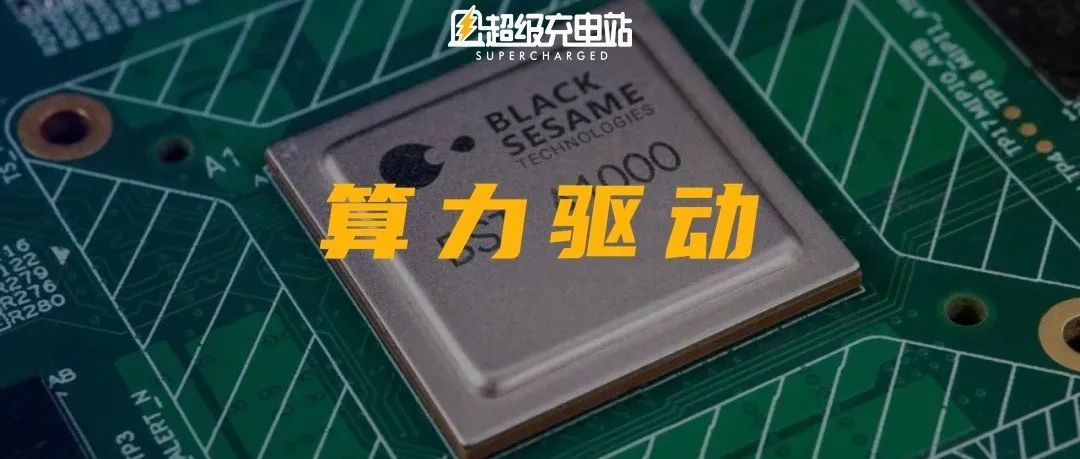Author: Cherio Cheng
As a new member who has been working in the supercharging station for just over a month, my colleagues may know that it took me a month to complete the onboarding process, but they don’t know that I actually started “interviewing” since March of this year. At that time, I hesitated because I felt that whether it was intelligent driving or intelligent cabin, they were still in a very “chaotic” stage, and many definitions were not clear.
But anything new is not progressing in a straight line. After the electrification consensus in the automotive industry, it is now “feeling the stones for the ford” on the road of intelligence. However, in this historical process, one thing is highly certain, which is the strong demand for large computing power chips in the intelligent automotive industry.
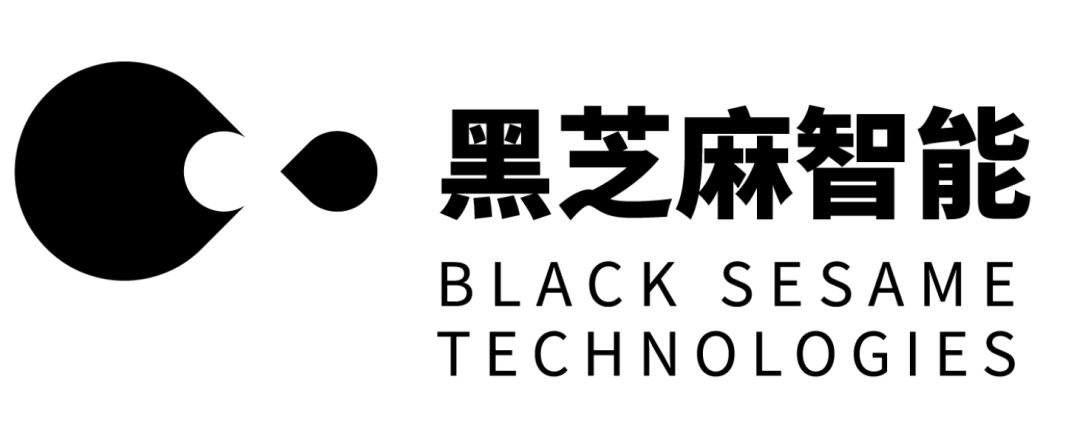
Large Computing Chip Promotes Automotive Innovation
Throughout the entire electronic industry chain, intelligent automobiles have become the most attention-grabbing area.
Yang Yuxin, the chief marketing officer of Black Sesame Intelligence, joked that he often communicates with automotive industry partners. When traditional automotive professionals chat, they say that they are also very lucky and have turned from a sunset industry to a sunrise industry overnight.
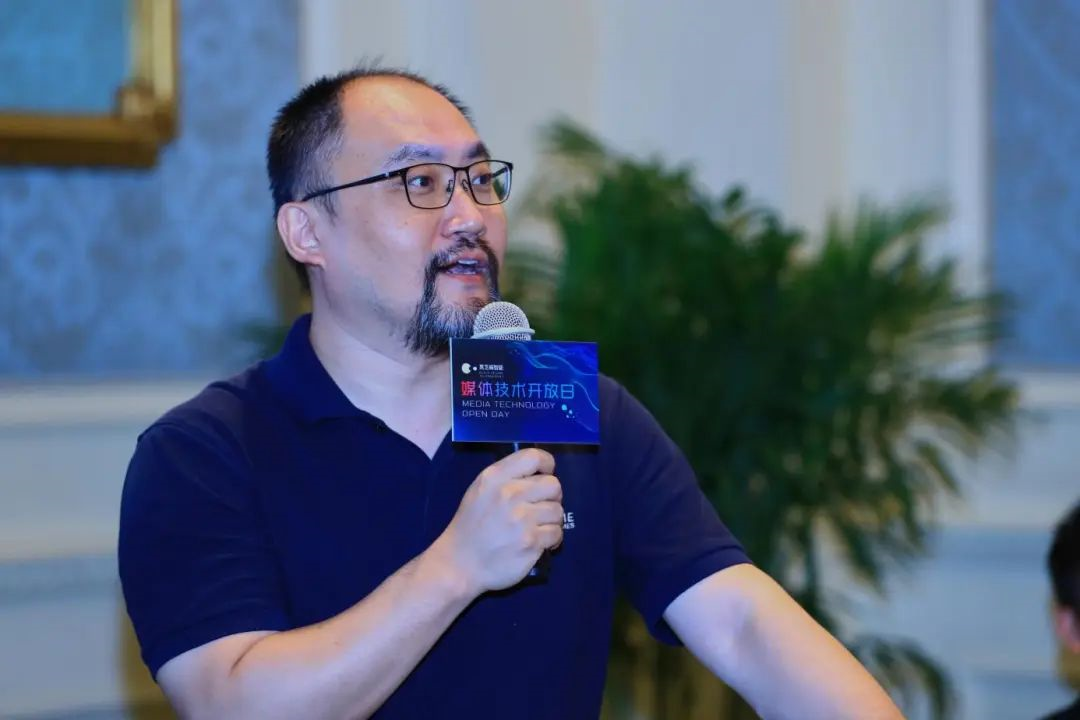
In fact, this is not a joke. Especially in the chip field, there is no crisis of being laid off at the age of 35. Even chip engineers who have passed the age of forty have changed five jobs within two years and can get higher salaries in each one. This is truly enviable in the current economic environment.
Compared with senior chip engineers, Yang Yuxin considers himself as a new automotive person. In fact, in recent years, new partners have continuously entered the automotive field from electronics, software, the Internet, and even other technology fields. As a new person in the automotive industry, they hope to bring some cross-domain experience to this industry.
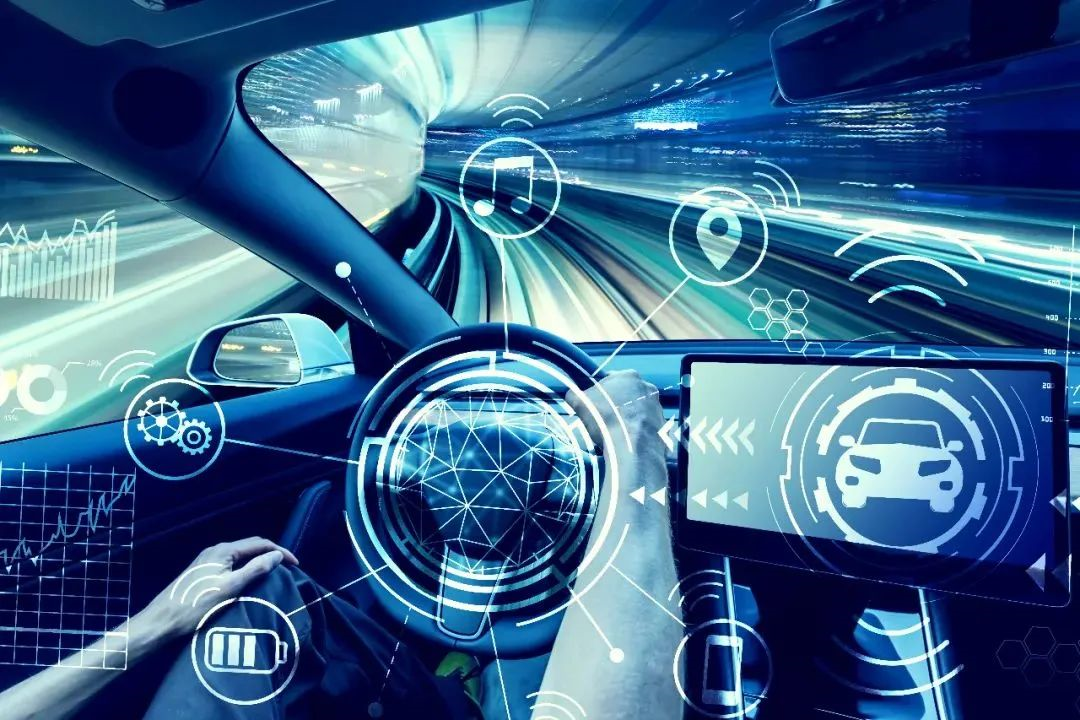
Of course, no matter which industry they were engaged in before, everyone has a common understanding, that is, as a technology that is very representative in automotive intelligence, autonomous driving will become more and more common in new models.
According to third-party research data, by 2025, the penetration rate of autonomous driving technology above L2 level is expected to exceed 25%, which means that one out of every four vehicles will have “advanced” autonomous driving capabilities.
Yang Yuxin believes that before 2025, at the L2-L3 level, the main mode of driving will be human-machine co-driving, with relatively mature technology and guaranteed safety and reliability, which can be controlled by drivers. However, the promotion of L3/L4 depends more on the construction of regulations, policies and regulations, as well as the corresponding intelligent transportation system.
All of this is inseparable from the computational power support of intelligent driving chips. From the perspective of the entire industry, Heizhi Ma Intelligence believes that there is a market capacity of more than billions of dollars. With the evolution of automotive electronic and electrical architecture, there are also many opportunities for other peripheral chips.

In addition to empowering automobile computing power, Heizhi Ma Intelligence can also make roads smarter. The intelligentization of roads is a very good complement to the intelligence of cars.
“In terms of the perception range of the car, the clarity of the camera may be 250 to 300 meters in the perception range, and it cannot be perceived further. If the road is made intelligent, the perception distance of the car can be extended infinitely. When the perception data of the car and the road are fully fused, and combined with cloud control platforms, etc., the efficiency of transportation can be greatly improved. We have seen some cases where the pilot programs of some regions’ car-road coordination can reduce road congestion by one-third or even more by dynamically adjusting the situation on the road.”

I strongly agree with Yang Yuxin’s point of view. In fact, we can now experience a little bit of “intelligent road” experience, such as Amap navigation, which will tell you how long you need to wait for the next traffic light at some intersections.
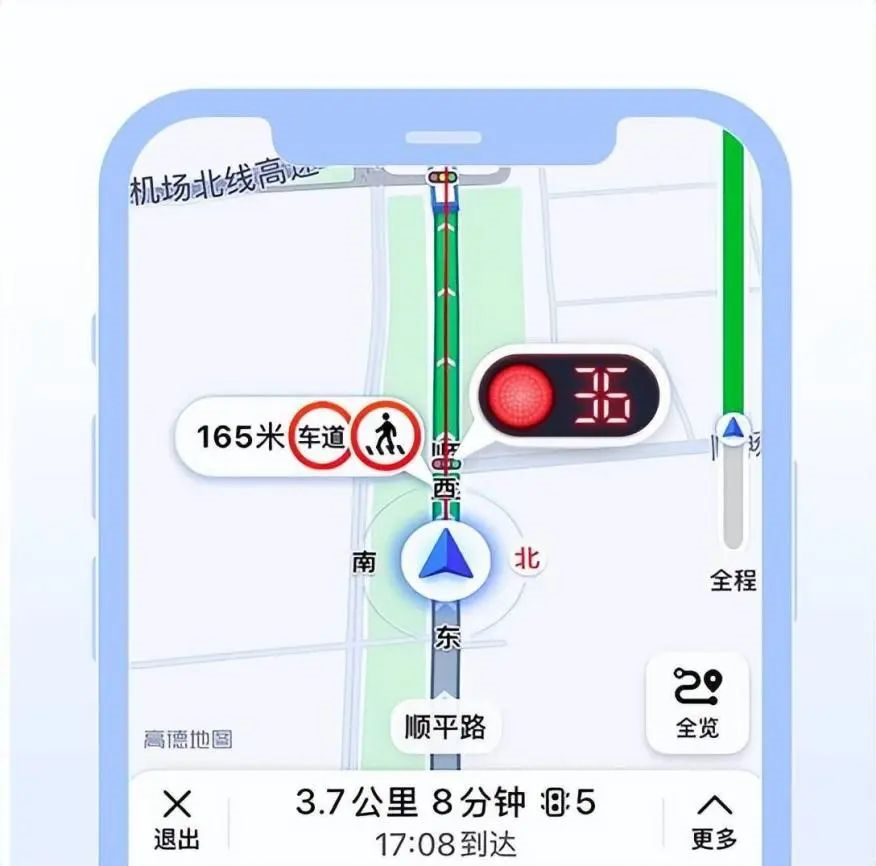
This is just a simple traffic aspect. After the commercialization and landing of autonomous driving in the future, the combination of cars and roads can make things simpler and more achievable. Heizhi Ma Intelligence believes that autonomous driving has great potential in the field of “intelligent roads”, and has already started pilot programs in several cities in China.In recent times, Shenzhen has started allowing L3 road trials, and many things are gradually being streamlined in terms of policy and regulations. At the same time, the commercial model is becoming increasingly clear, and auto manufacturers are still experimenting with software subscription fees, but Yang Yuxin believes this can be successful. After all, in the era of smartphones, users have developed a habit of digital consumption by subscribing to software.

Compared to smartphone chips, car chips are more complex, and integrated circuitry is also becoming more complex to meet the ever-increasing demand for automobile intelligence.
Although the industry has always been talking about the concept of “central computing,” Heizhima Intelligence believes that the evolution of the next generation of electronic and electrical architecture is not an overnight process. There will be different stages in the process of evolution from domain control architecture to central computing, including the fusion between domains. Finally, there will be a huge chip that integrates all the functions.

As for whether algorithm or computing power is more important, Yang Yuxin believes it’s the latter, because computing power is the “margin” of the entire system’s functionality. As a relatively standard chip enterprise, Heizhima Intelligence firmly believes that hardware capabilities are the most important.
The development of high-computing-power chips will become the core driving force for promoting automobile innovation.
Data is the “blood” of smart cars
If computing power is the “brain” of smart cars, then data is the “blood” of smart cars.
Smart cars need to achieve very large data transfer and circulation, to support the functionality deployed on the new generation of electronic and electrical architecture. To process this large amount of data, even stronger performance computing power is needed, to drive the evolution of the electronic and electrical architecture through chips.

In the view of Ding Ding, vice president of Heizhima Intelligence, in the current stage, smart cars will divide several large functional units into several large controllers by domain, to solve the enhancement of related functional experiences. With technological advancements, we will consider merging the several large functional domains and moving towards the ultimate evolution of central control. At this time, we will face the problem of how to manage and integrate a large amount of data after integration, as well as how to build a service architecture. This is Heizhima Intelligence’s understanding of the bottom-up logic of the electronic and electrical architecture.
Follow this logic, facing the changes in industry needs, Black Sesame Intelligence also matches the commercialized landing of the A1000 series chips in stages, following the trend of centralized electronic and electrical architecture.
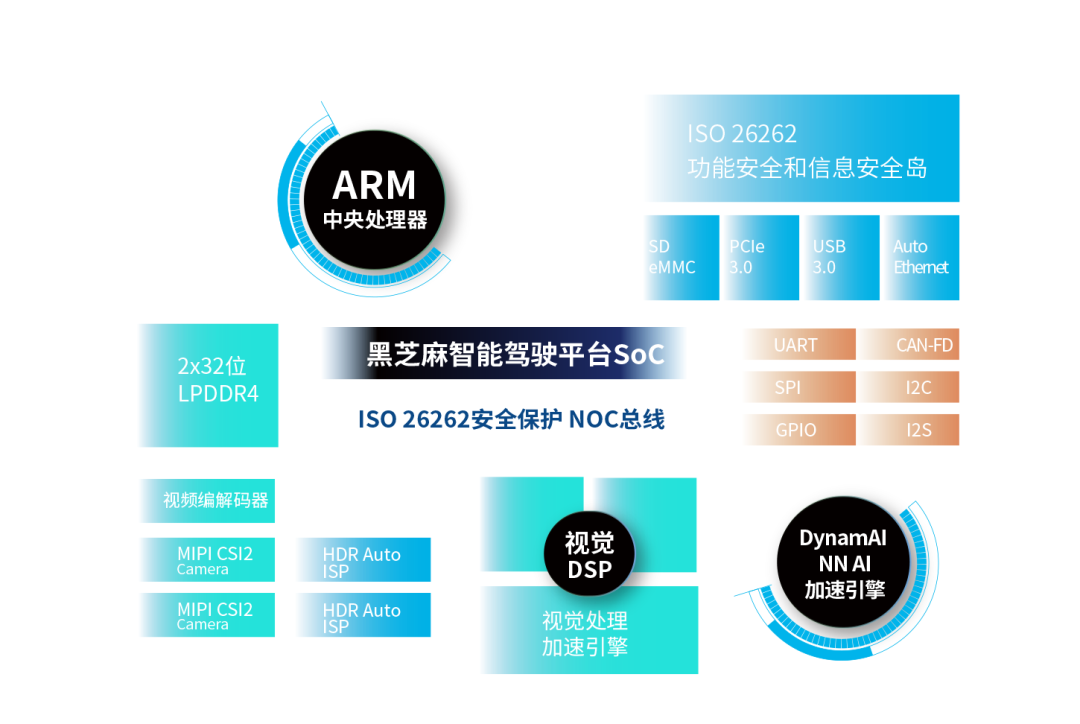
Of course, besides being applied to the domain control of electronic and electrical architecture, the main battlefield of Black Sesame Intelligence chip combination solution is still in the L2-L3 intelligent driving field, such as in high-level intelligent parking, where the A1000L chip can bring more sufficient computing power at the same cost control.

In addition, with the increase in demand for in-vehicle sensing and human-machine interaction, Black Sesame Intelligence is also using the same chip to do protocol processors in the cabin.
Although the universality of the A1000 series chips seems to be very strong, in the actual landing application scenarios, due to the lack of peripheral supporting chips, customers will have concerns about the overall scheme. Therefore, Black Sesame Intelligence has done some verification work on peripheral domestic chips in advance, forming a primary version of the national automatic driving L2+ reference design and providing it to car manufacturers to improve the utilization of domestic chips.

It should be noted that, as a semiconductor company, Black Sesame Intelligence’s R&D investment is not limited to chips, but also includes algorithmic parts and the data behind the algorithms. In theory, it takes about two years from chip design to mass production, and Black Sesame Intelligence has gone through relevant processes, such as AEC-Q100 reliability testing and certification.
“Our thinking logic is to make it easy and efficient for customers to use our chips. We solve some very critical technical points that customers may encounter and be prepared in advance, so that customers don’t have to go through those roads themselves.”

From the words and details of Ding Ding, Vice President of Black Sesame Intelligence, we can feel that they attach great importance to the “usability” of chip solutions for customers. It is not enough to just make a big computing power vehicle-grade chip, but to perfect the implementation of the whole chip computing power application scenarios from the perspective of customers.
Black Sesame Intelligence provides not only computing power, but also a complete set of project services.## Manufacturing Process of Automotive-Grade Chips
Ereday is a product expert in Black Sesame Intelligence chips, and he may be the person in the company who understands the manufacturing process of high-level automotive brain-powered chips the best.

It is undeniable that the automotive industry is still in a “lack of chips” state, which is related to the supply chain, and also because the number and types of chips have increased significantly in the era of intelligent cars. So what is the industrial chain process of chips? What is the difference between automotive chip manufacturing and other industries?
Following PCs and smartphones, automotive electronics are becoming a powerful growth driver for the chip manufacturing industry. As a midstream chip supplier in the industry chain, Black Sesame Intelligence’s business involves chip design, system integration, simulation testing, etc.
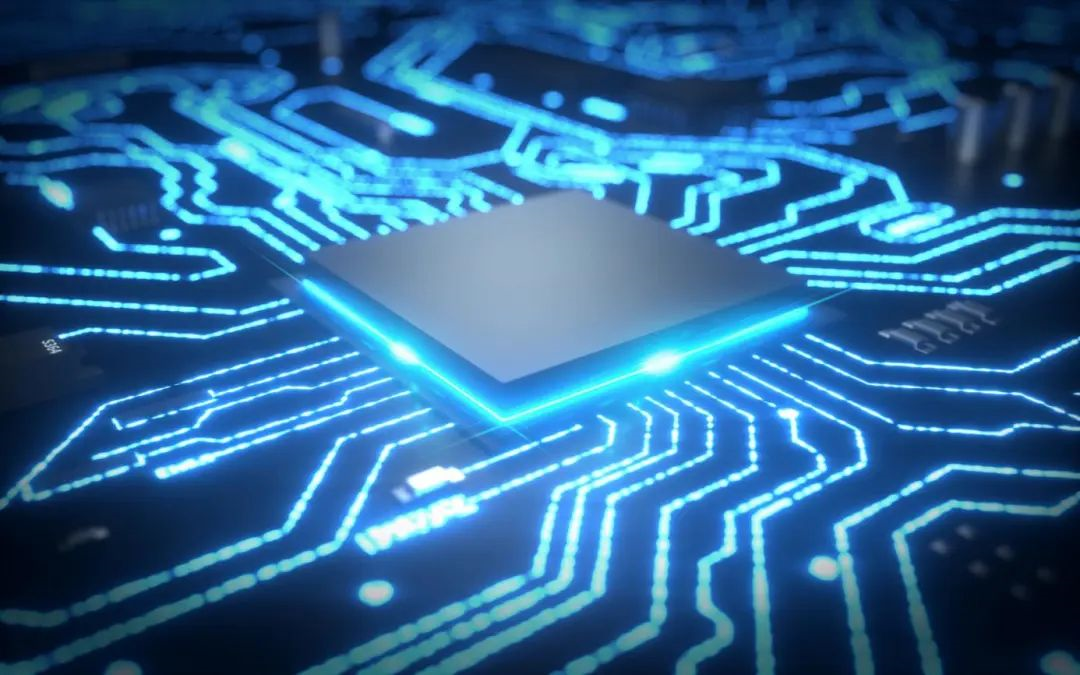
Like consumer electronics chips, Automotive-Grade chips also follow Moore’s Law, and the currently recognized process in the industry is 28nm. The manufacturing process of automotive-grade chips lags behind that of consumer-grade chips, and the certification for automotive chips is much more stringent, ensuring that the chips will not malfunction within a 15-year cycle.
In terms of chip manufacturing, Black Sesame Intelligence mainly entrusts TSMC for foundry services. TSMC’s automotive chip production line is separate from consumer-grade chips, and personnel training is also more stringent. In addition, packaging is also a critical step in the manufacturing process.
Currently, Black Sesame Intelligence’s A1000 and A1000L are in mass production and can support “driving and parking integrated” with a single chip. Compared to the multi-chip design of most drivable and parkable chips, the single-chip design is more concise and cost-effective.

Facing different customer needs, in addition to providing hardware computing platforms based on the A1000 series chips, Black Sesame Intelligence also provides software value-added services, including bottom-layer BST, middleware, and upper-layer algorithm applications.
In short, Ereday said that with the A1000 and A1000L platform solutions, it is basically possible to cover the highly penetrated assisted driving functions on the market. In the future, Black Sesame Intelligence will also build the Drive BEST matrix platform to promote the development of China’s autonomous driving industry.
“Mass Production” of Algorithms
Chips provide computing power, and algorithms realize functions.Black Sesame Intelligence has developed many perception algorithms, which can accelerate the speed of product landing for intelligent navigation and parking applications in a relatively short period of time, thereby speeding up the mass production and application of chips.
In terms of perception algorithms, Zhong Ming, the Senior Manager of System Architecture, gave an example of upgrading camera pixels, such as going from 2 MP to 8 MP, which can extend the detection distance from 120m to 250m.
Based on an 8 million pixel camera, vehicles can perform automatic cruise at a higher speed on highways. At the same time, detection can be performed in advance for the trajectory of pedestrians crossing in the distance as well as targets of traffic lights at about 100 meters away.
“A 2 million pixel camera typically corresponds to L2 driver assistance products, which do not need to perform red light or more complex traffic sign detection. For the 8 million pixel application scenario, it can be expanded to applications such as NOA, and can classify car models such as sedans, SUVs, Vans, and Buses, and so on.”
For autonomous driving, Zhong Ming believes that only 20% of standard scenarios need to be solved, and the other 80% are various non-standard scenarios. With the verification of some corner cases, the algorithm will become increasingly robust and the goal of mass production will be achieved.
However, the production of perception algorithms is still far from complete, because various strange problems will be encountered in the mass production process, especially in terms of fault diagnosis. The wind and rain experienced by vehicles often result in some dirty or malfunctioning lenses, which cause calibration deviations that require visual diagnosis of images to ensure that the entire system is working in an acceptable state.
The design of perception algorithms is based on the visual needs of assisted driving and related acquisition data, and is completed through different methods of post-processing to achieve final productization, forming a closed-loop iterative process as a whole.
That is roughly the process of “mass production” of algorithms based on chips.Completed C and C+ rounds of financing, Hemaxijian Intelligence raised more than $500 million. With ample capital injection, it will accelerate the mass production and application of its autonomous driving chip.
Hemaxijian Intelligence founder and CEO Shan Jizhang said: “The development of automobile intelligence provides an era boost for high-performance, high-computing autonomous driving chips. Thank you for the trust, recognition and support of the investors in Hemaxijian Intelligence. We will continue to enhance the research and development capabilities of the core technology and chip products, constantly strengthen our technological advantages, comprehensively accelerate the commercialization of autonomous driving chips, and further enhance our competitive advantage in the industry.”
Faced with the explosive demand for intelligent driving in the next 3-5 years, high-computing autonomous driving chips will undoubtedly become a must-have. Under the concept of “software-defined car”, computing power will become the new “driver” of intelligent cars, which will reshape the automotive industry and even surpass the previous wave of electrification.
At that time, the intelligent car will not only be a car, but also the next-generation high-performance computing platform after PC and smartphones.
-END-
This article is a translation by ChatGPT of a Chinese report from 42HOW. If you have any questions about it, please email bd@42how.com.
